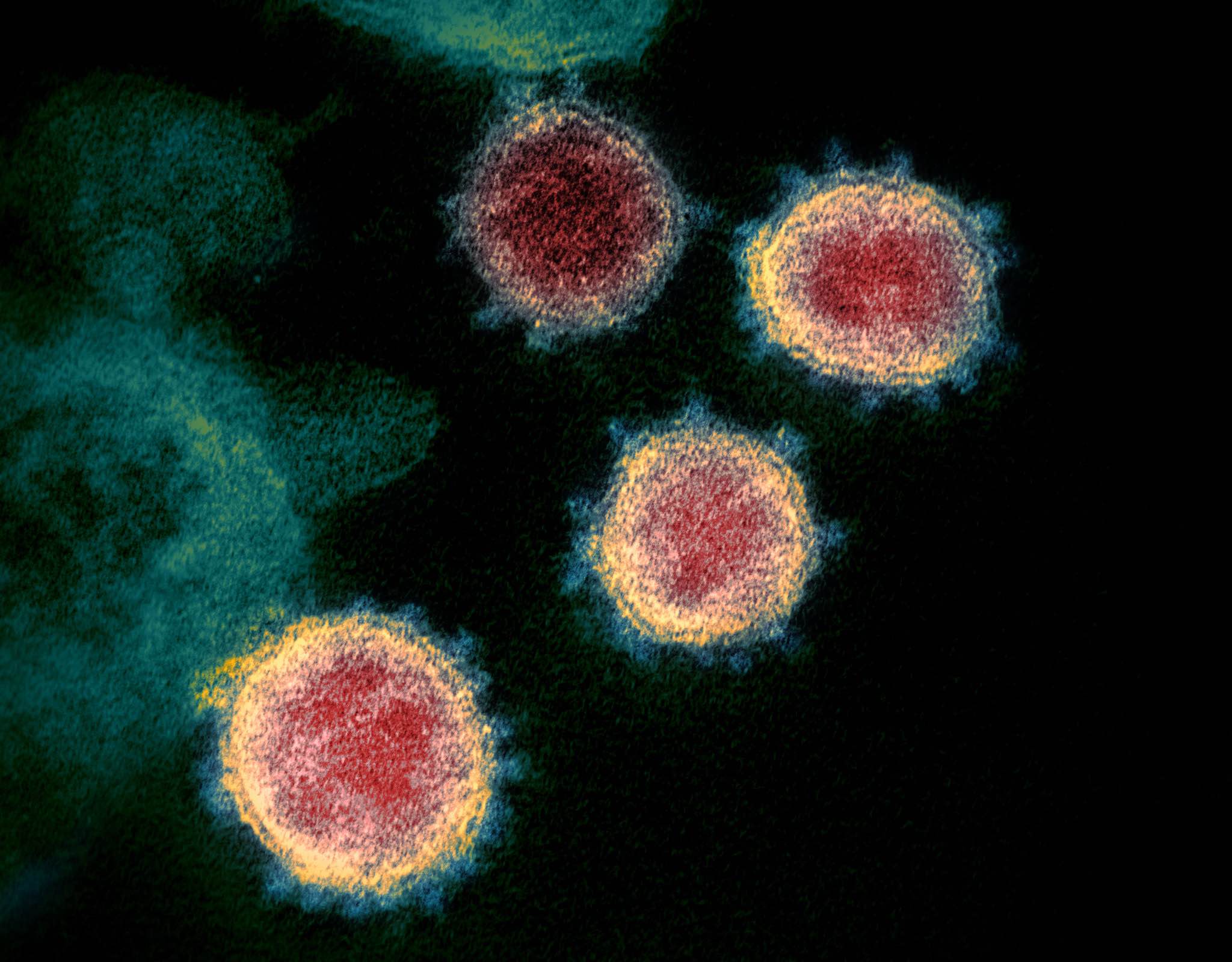guānzhuàng (guān·zhuàng crown; corona · form; shape 冠状 冠狀) ← Tap/click to show/hide the “flashcard”
[Note: Tap/click on a Pīnyīn (Pīn·yīn {Piecing Together} · Sounds → [Pinyin] 拼音) expression to reveal its “flashcard”, tap/click on a “flashcard” or its Pīnyīn (Pīn·yīn {Piecing Together} · Sounds → [Pinyin] 拼音) expression to hide the “flashcard”.]
As of this writing, deep in the year 2021, the subject of the COVID-19 pandemic has been, to say the least, on people’s minds now for a while. So, it would be good to be able to refer to things related to it in Mandarin when speaking to people in the Mandarin field, or when speaking to our brothers and sisters in the truth.

An electron microscope image of SARS-CoV-2—also known as 2019-nCoV, the virus that causes COVID-19
NIAID
Heavy Lies the Crown
This week’s MEotW, “guānzhuàng (guān·zhuàng crown; corona · form; shape 冠状 冠狀)”, means “corona-shaped”. “Corona” is used in English to refer to many kinds of at least vaguely crown-shaped things, including the spike proteins that stick out of the viruses that cause COVID-19. In electron microscope images like the one above, these spike proteins look sort of like the sun’s corona, which looks sort of like a crown.
Interestingly, according to the collaboratively edited resource Wiktionary, “corona” and “crown” are doublets of each other. What is a “doublet”? Again, according to Wiktionary:
(linguistics) One of two or more different words in a language derived from the same etymological root but having different phonological forms (e.g., toucher and toquer in French or shade and shadow in English).
Coming back to Mandarin, this week’s MEotW “guānzhuàng (guān·zhuàng crown; corona · form; shape 冠状 冠狀)” can be combined with other expressions, such as past MEotW “bìngdú (bìng·dú disease; illness; sickness · {poison; toxin [→ [[computer] virus]]} → [[computer] virus] 病毒)”, to produce expressions such as the following:
- guānzhuàng bìngdú ((guān·zhuàng corona · shape 冠状 冠狀) (bìng·dú disease · poison → [virus] 病毒) → [coronavirus])
- guānzhuàng bìngdú bìng ((guān·zhuàng corona · shape 冠状 冠狀) (bìng·dú disease · poison → [virus] 病毒) (bìng disease 病) → [coronavirus disease])
In view of the current COVID-19 pandemic, of course people generally are now using the above expressions to specifically refer to COVID-19, and to the particular type of coronavirus that causes it. Keep in mind, though, that there are actually several types of coronaviruses, including but not limited to the one that causes coronavirus disease 2019 (COVID-19), which is one of several diseases caused by coronaviruses. Another example of a disease caused by a type of coronavirus is SARS.
This expression is being used to refer specifically to coronavirus disease 2019 (COVID-19), as opposed to coronavirus diseases in general:
- 2019 guānzhuàng bìngdú bìng ((2019) (guān·zhuàng {hat → [corona]} · shape 冠状 冠狀) (bìng·dú disease · poison → [virus] 病毒) (bìng disease 病) → [coronavirus disease 2019 (COVID-19)])